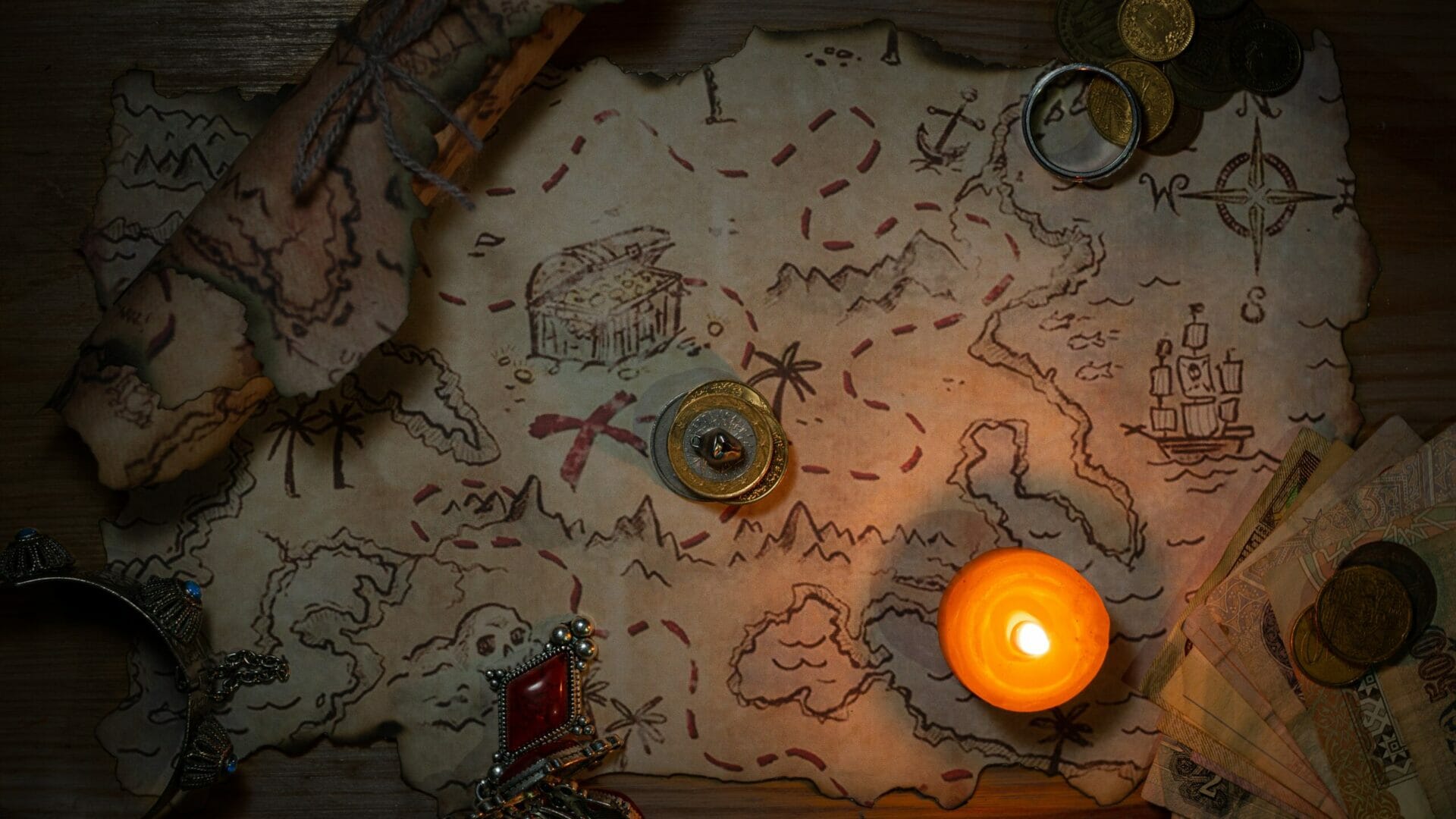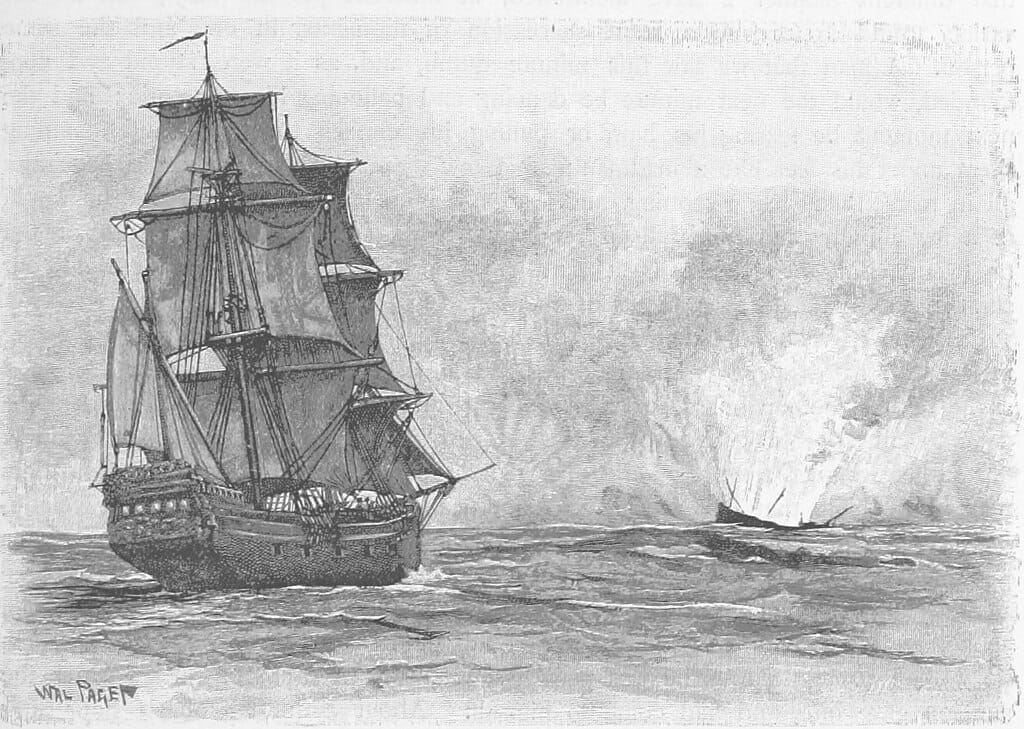
The Goonies | A Nostalgic Throwback to Youth
Year
Runtime
Director
Cinematographer
Production Designer
Music by
Country
Format
Subgenre
A group of outcast and rowdy children, a lost pirate treasure, an ancient map, a sunken galleon, and a cavern full of pitfalls. These are the key ingredients of an epic adventure filled with twists and turns and genuine friendship sure to warm everyone’s heart.
If all this sounds quite familiar to today’s viewers, much of the credit goes to the 1985 movie The Goonies. Produced by Amblin Entertainment and the brainchild of a successful creative collaboration between Steven Spielberg (story), Chris Columbus (screenplay), and Richard Donner (director), The Goonies has become a cult and a landmark of the 1980s. Aimed primarily at young viewers, it features an ensemble cast of talented actors, mostly young up-and-comers, who come across as convincing and realistic. Some of them – Sean Astin and Josh Brolin in the lead – would later see their careers take off.
Drawing on the thrill of the adventure genre and the pirate themes of literature, The Goonies is a timeless portrait of friendship and childhood with a nostalgic flavor. A movie that has left a lasting impact on the collective imagery of multiple generations of moviegoers, who have seen their imaginations and fondest dreams take shape on the screen.
The road to a legendary pirate treasure
Goon Docks, a residential area in the port city of Astoria, Oregon, is under threat. The local country club is planning to displace families and demolish the neighborhood, turning it into an exclusive golf course. A group of young friends who call themselves “The Goonies” are about to spend their last hours together before moving away. Their families, indeed, do not have the financial means to redeem their homes.
The Goonies are Mikey (Sean Astin); Mouth (Corey Feldman); Data (Ke Huy Quan); and Chunk (Jeff Cohen). Together with Mikey’s older brother Brand (Josh Brolin) and his friends Andy (Kerri Green) and Steph (Martha Plimpton), they embark on their ultimate adventure. The fortuitous discovery of an ancient map gives them a last glimmer of hope to cling on to. Following a trail lost in time, the group of outcasts set out in search of the legendary treasure of the pirate “One-Eyed Willy”. And if that were not enough, the road to the rich stuff will run into three escaped criminals, the Fratellis, and deathly booby traps.
On the art of quotation
It only takes a few minutes of watching to understand why The Goonies ranks as one of the hallmarks of the 1980s. The young protagonists’ BMX bikes; the video arcade; the references to Michael Jackson, the movie Gremlins (1984), and James Bond. The icing on the cake: Cyndi Lauper‘s hit single The Goonies ‘R’ Good Enough, which is part of the soundtrack. In addition, Richard Donner himself had fun slipping in amusing allusions to his previous movie Superman (1978). Therefore, The Goonies relies on an ingeniously crafted narrative plot with quotes from the pop culture of the time.
The paths of some of the leading architects of children’s cinema crossed on the set. Spielberg’s story echoes both the adventurous atmosphere of the Indiana Jones series (1981) and the fascination for the unknown of E.T. the Extra-Terrestrial (1982). One-Eyed Willy’s booby traps and cartoonish villains later inspired Chris Columbus’ cult Christmas movie Home Alone (1990). Fun facts: the second installment of Indiana Jones features Ke Huy Quan, aka Data, as the archaeologist’s sidekick; while Corey Feldman, aka Mouth, would later be part of the main cast of another 1980s cult movie: Stand by Me.
Such an interweaving of ideas and experiences has made the movie an inexhaustible source of inspiration. A crossroads whose influence extends for over three decades to the present day. For example, one can hardly fail to mention Stranger Things‘ debt to The Goonies. Indeed, the Duffer Brothers‘ popular Netflix show owes much to the aesthetics, themes, and characters of The Goonies. As Sean Astin’s cameo in the second season confirms.
“Goonies never say die”
There are many reasons for the enduring success of The Goonies. One starting point is to witness the movie’s ability to translate some topical themes of the adventure genre into an ordinary, contemporary context. Thus, the pirate galleon, the ancient map, and the lost treasure – elements that previously could only be found in the novels of Robert Louis Stevenson or Emilio Salgari – are within the reach of a group of children. At the same time, as critic Roger Ebert pointed out, Spielberg’s story is enticing both to adults and to young viewers.
There used to be children’s movies and adult movies. Now Spielberg has found an in-between niche, for young teenagers who have fairly sophisticated tastes in horror.
Roger Ebert in his review of The Goonies
The group itself is another key element of the movie. Instead of a single hero, the plot revolves around a plurality of characters, each with distinctive and complementary characteristics. Mikey is the shy and quiet leader of the Goonies, who hides a pure and fearless heart. Mouth is the cheeky one whose sharp tongue is a constant source of trouble. Data is a budding gadget inventor who takes inspiration from Agent 007 James Bond. Chunk is the clumsy one who is always hungry. Each of them enjoys a unique and vivid characterization and contributes to the realistic collective alchemy. The cast acts in a spontaneous and natural way, getting it on with swearing and slang, as one would expect from a real group of friends their age. After it was all done, Donner himself admitted how challenging it was to manage a chaotic group of teenagers on the set.
Revenge of the outcasts
The movie focuses on marginalized, outsider children, and contributed to inaugurating a narrative strand that has since thrived to this day. Just think of the success of a character like Harry Potter in later decades. Or even to the kids in Stephen King‘s It – another 1980s milestone – and their appellation as “The Loser’s Club”. Or the protagonists of the aforementioned Stand by Me – also based on a King novella – and those in John Hughes‘ The Breakfast Club, also released in 1985.
The Goonies are the opposite of the prototypical wealthy American teenager, usually the captain of the football team, and owner of an expensive race car. They come from the working class and live in humble suburbs, where “nothing exciting ever happens”. Not by chance, “goonie“ is an American slang term for an awkward, silly person.
The movie also erects a curious parallel between the Goonies – the leader Mikey in particular – and the pirate One-Eyed Willy. The latter, after all, is himself an outcast, living on the edge of the law and society. Like Mikey, who suffers from asthma, Willy is also marked by a physical/health problem (hence his nickname). The bond between the two characters is thus instinctive and spontaneous, so much so that the finding of the map seems like a sign of destiny. It is the revenge of the outcasts. The opportunity for those who to society and their peers “count for nothing” to become heroes of an incredible feat.
Boundless imagination
Ultimately, The Goonies is a work conceived for an audience as young as the main characters in the story, but still family-friendly. Because it celebrates a time that everyone has experienced: childhood. It is a hymn to youth and its virtues, first and foremost imagination. Trusting a long-forgotten legend, the heroes discover an underground world of caves and secret passageways that has been lying beneath their city for centuries. An epic world not far from the fantastic world submerged in the deep depths of every now-grown child’s mind.
It is a child-sized journey in which the wildest childhood fantasies take shape, literally. To prove this, the pirate galleon, the Inferno, was a real physical part of the set. It took two and a half months of work and 650 square meters of fabric for a 30-meter-long hull.
But it is not just about this. In a society of inequalities like Goon Docks, where economic logic and interests dominate, imagination is the key to an unexpected way out. It is indeed in the most desperate situation, when every resource of the rational adult world fails, that a group of runaway kids, armed only with an ancient map, take the fate of their neighborhood into their own hands.
Don’t you realize? The next time you see sky, it’ll be over another town. The next time you take a test, it’ll be in some other school. Our parents, they want the best of stuff for us. But right now, they got to do what’s right for them. Because it’s their time. Their time! Up there! Down here, it’s our time. It’s our time down here.
Mikey Walsh (Sean Astin)
However, in turn, the Goonies are destined to become adults. Indeed, the incredible journey they embark on is both physical and metaphorical. It retraces the coming-of-age theme of many 1980s narratives. It follows that the real treasure, the ultimate goal of the adventure, turns out to be a renewed friendship, strengthened by hints of first love and self-awareness.
In conclusion, The Goonies gives viewers who grew up in the 1980s a feeling of nostalgia for youth and past experiences. Whether they have been lived or only imagined. Along with an invitation to look at everyday reality through children’s eyes, to turn even a rainy autumn day into a wondrous adventure.
Tag
Buy a ☕ for Hypercritic










